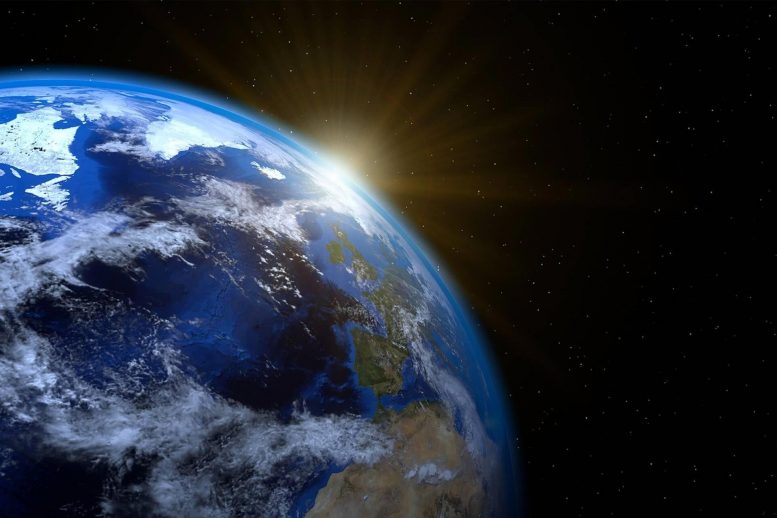
The quantitative model used in the study explains the enigmatic melt degrees and layered structures observed in most cratons on Earth.
Monash University geologists have shed new light on the early history of the Earth through their discovery that continents were weak and prone to destruction in their infancy.
Their research, which relies on mathematical modeling, was published this month in Nature.
The Earth is our home and over its 4,500,000,000 (4.5 billion) year history has evolved to form the environment we live in and the resources on which we depend.
However, the early history of Earth, covering its first 1.5 billion years remains almost unknown and, consequently, poorly understood.
“This was the time of formation of the first continents, the emergence of land, the development of the early atmosphere, and the appearance of primordial life – all of which are the result of the dynamics of our planet’s interiors,” said lead study author ARC Future Fellow Dr. Fabio Capitanio from the Monash University School of Earth, Atmosphere and Environment.
“Reproducing the conditions of the early Earth in computer-generated numerical models, we show that the release of internal primordial heat, three to four times that of the present-day, caused large melting in the shallow mantle, which was then extruded as magma (molten rock) onto the Earth’s surface,” he said.
According to the researchers, the shallow mantle left behind by this process was dehydrated and rigid and formed the keels of the first continents.
“Our results explain that continents remained weak and prone to destruction in their infancy, ~4.5 to ~4.0 billion years ago, and then progressively differentiated and became rigid over the next billion years to form the core of our modern continents,” Dr. Capitanio said.
“The emergence of these rigid early continents resulted in their weathering and erosion, changing the composition of the atmosphere and providing nutrients to the ocean seeding the development of life.”
Dr. Capitanio specializes in investigating the dynamics of the Earth’s tectonics and plate motions to better understand the mechanisms that force single plates or whole-Earth changes.
The work adds to the knowledge on supercontinent formation and its fragmentation into the present-day continents.
The quantitative model used in the study explains the enigmatic melt degrees and layered structures observed in most cratons on Earth.
The process shows that continents remain weak and prone to destruction in their infancy, then progressively melt and differentiate to become stable continents.
This accounts for the transition from the Hadean, covering the first 500 million years of Earth history, in which crust was completely recycled, to the Archean (four to three billion years ago), when rigid continental keels built up and remained preserved through time.
“The geological record suggests that the very early continents did not survive and were recycled in the planet’s interiors, yet this trend dramatically inverted approximately four billion years ago, when the most enduring piece of continents, cratons, appeared,” Dr. Capitanio said.
Only tiny crystals remain from Earth’s earliest continental crust, formed more than 4 billion years ago. The mysterious disappearance of this crust can now be explained. The very process that formed new crust, replacing the old one, is critically related to how the continents became stable. By extracting melt from the Earth’s interior, rigid rafts in the mantle form beneath the new crust, shielding it from further destruction. The crust formed in this way is still preserved in the core of today’s continents, the cratons.
The cratons keep record of early life on our planet and are currently a very small fraction of the surface.
Australia hosts three cratons, the Yilgarn, the Pilbara, and the Gawler cratons.
Reference: “Thermochemical lithosphere differentiation and the origin of cratonic mantle” by Fabio A. Capitanio, Oliver Nebel and Peter A. Cawood, 2 December 2020, Nature.
DOI: 10.1038/s41586-020-2976-3

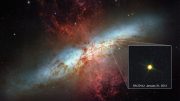

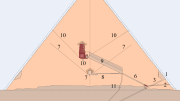
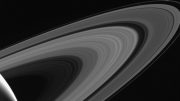
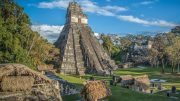

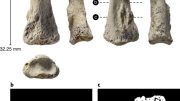

Surprisingly, nothing is said about the changing mineralogy of the crust over time as a result of increasing hydration with cooling, and the direct influence of life. The vast beds of limestone/dolostone are largely the result of shell-forming plankton. Also, the invention of photosynthesis produced an excess of atmospheric and oceanic oxygen, which resulted in new oxides developing in both marine sediments and rocks on land in what is now referred to as “secondary minerals,” particularly in metallic sulfide bodies.
Some researchers suggest that in more resent times the contents have move very rapid causing great flooding, earthquakes and ancient cities and contenents to become lost under water.
Rapid contenental movement seems unlikely. Therefore I believe this sudden shift is entire Earth shifting on it’s axis. The magnetic polls of Earth have been influenced by and shifted when a very large and very magnetic near Earth object came close enough to influence the magnetic poll to try to fallow the neo but not pull it out of the orbit of the sun. This shift would have been enough to change the location of every contenent. Antarctica would have been much closer to a tropical climate. Prehistoric animals would have been frozen instantly. Prehistoric ocean life would be instantly on dry land covered in silt to give us our fossils as we know them today.
I look forward to hearing your thoughts and a really and communication with you about this theory.
I’m afraid that you have taken in a lot of misinformation. You said, “Some researchers suggest that in more resent [sic] times the contents [sic] have move very rapid [sic] causing great flooding, earthquakes and ancient cities and contenents [sic] to become lost under water. How about sharing just who those researchers are?